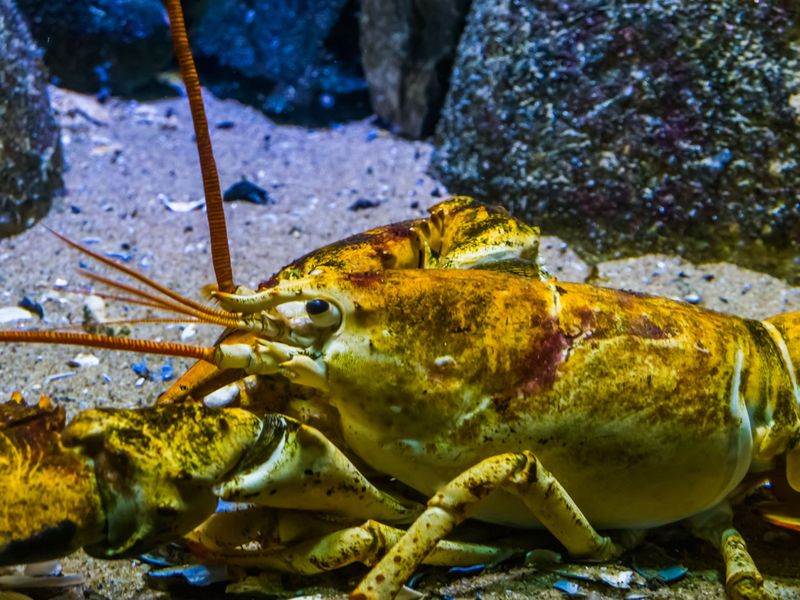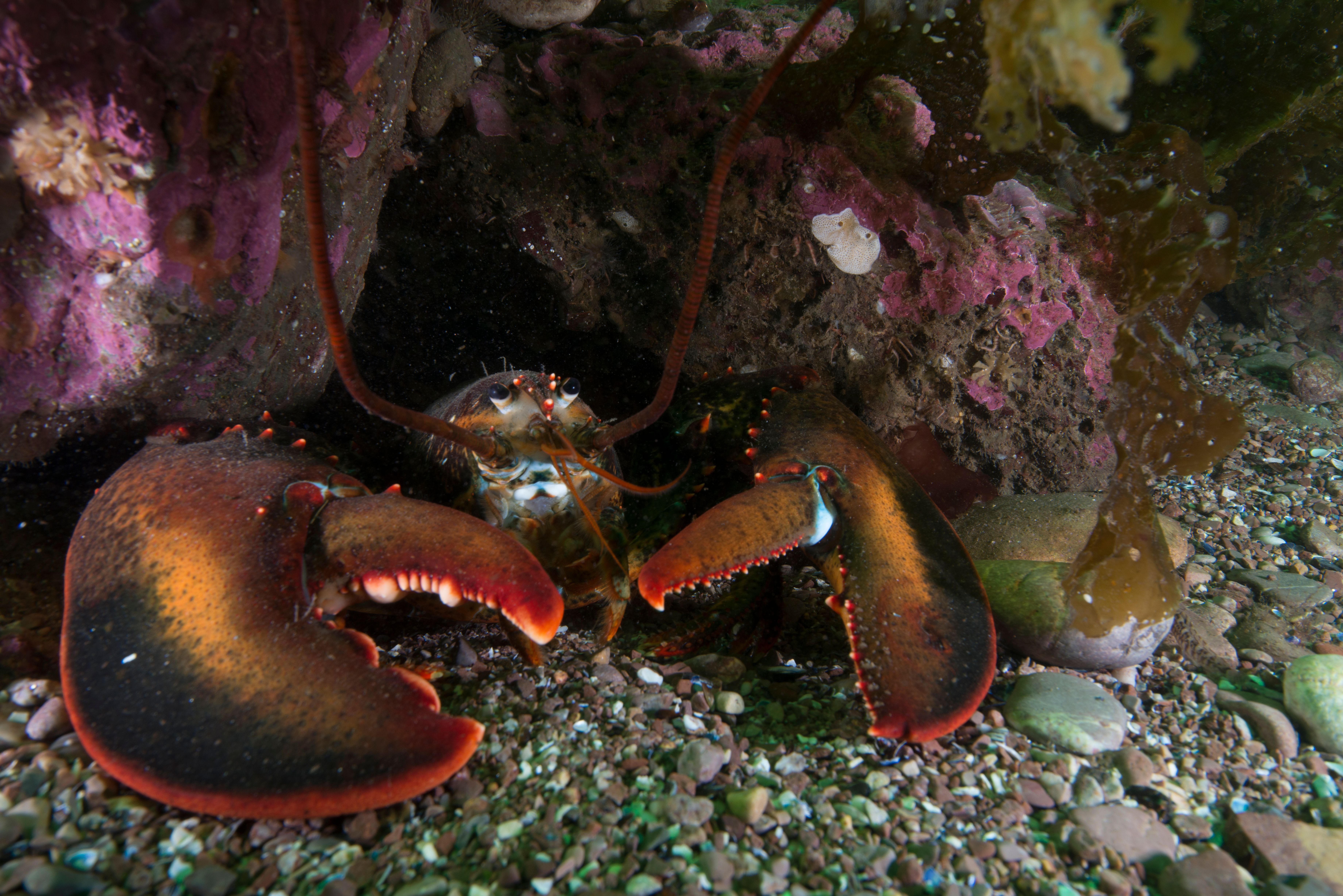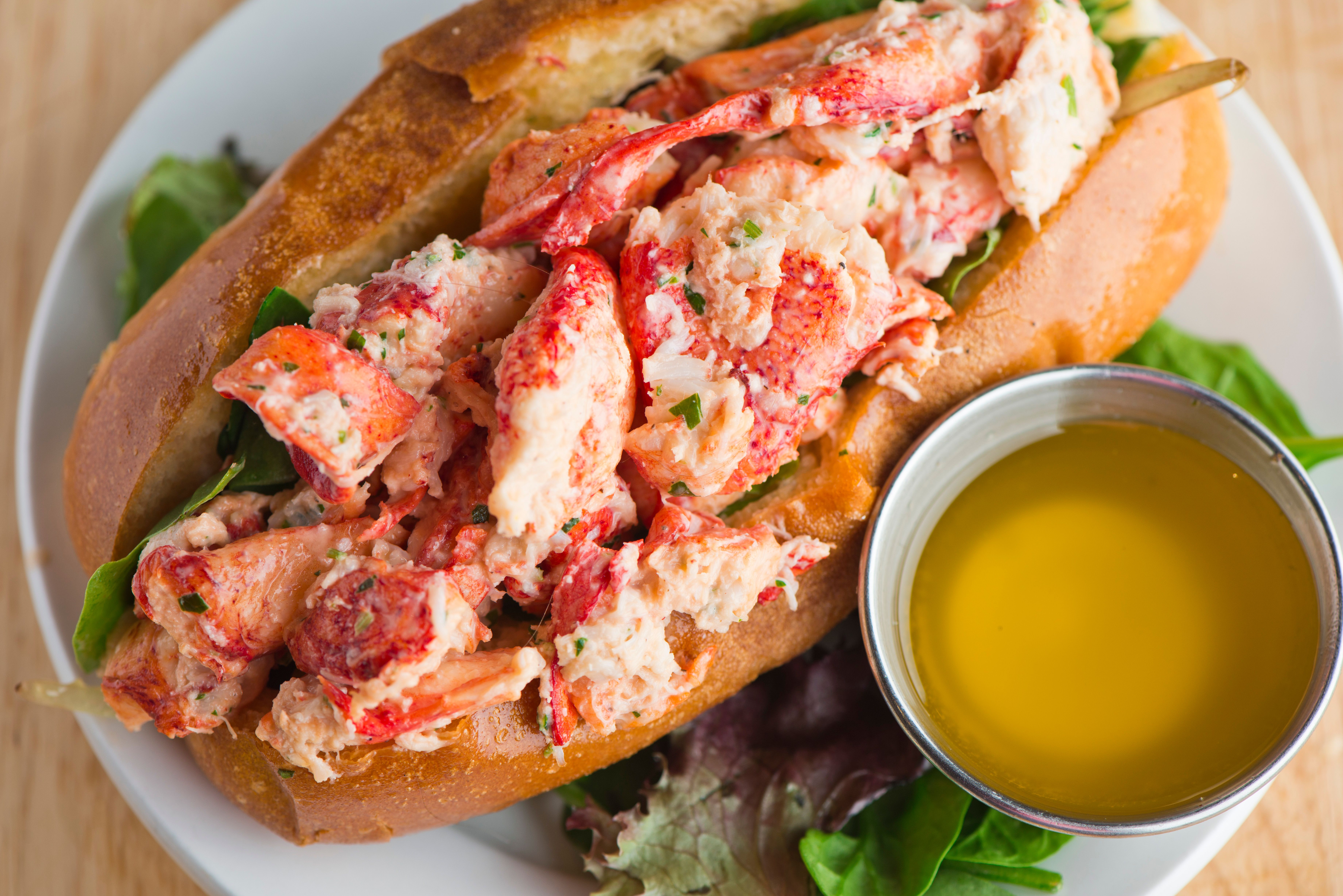American Lobster

Species Details
Homarus americanus
Nephropidae
Decapoda
Rocky bottoms, shallow coastal waters
1 - 4 lbs.
8" - 24"
How long can the American lobster live?
American lobsters can live over 100 years and never stop growing! They keep molting and can reach more than 4 feet long and over 40 pounds, making them one of the largest crustaceans in the ocean.
The American lobster, known scientifically as Homarus americanus, is a fascinating marine creature. It thrives along the Atlantic coast of North America. This species is a cornerstone of the New England fishing industry.
Lobsters prefer cold, rocky environments. These habitats provide shelter from predators and abundant food sources. The

Spawning occurs mainly in summer. Female lobsters carry eggs for up to a year. This long gestation period is crucial for the species' survival.
The American lobster is prized for its sweet, tender meat. It is a popular choice in culinary dishes worldwide. Its edible quality is influenced by its diet and habitat.
Lobster fishing supports thousands of jobs in coastal communities. It has a significant economic impact in the United States. Conservation efforts are vital to protect this valuable resource.
The American Lobster: Species Overview and Habitat
The American lobster, distinguished by its robust physique and large claws, is an integral part of the marine environment. These creatures are adept predators and prey within their ecosystems. Their complex interactions support a balanced underwater community.
Lobsters thrive in cold waters ranging from 40 to 50 degrees Fahrenheit. This temperature preference influences their geographic distribution. They are predominantly found from Labrador to North Carolina.
Rocky seabeds are the ideal habitat for lobsters. These structures offer crevices where lobsters can hide. Such environments provide a safe haven from predators.
American lobsters are nocturnal hunters, feeding primarily at night. Their diet includes fish, mollusks, and crustaceans. This varied menu contributes to their meat's unique flavor.

The American lobster is identifiable by its asymmetrical claws. One claw is larger, known as the crusher. The other, thinner claw is used for cutting and tearing food.
Certain characteristics of the American lobster enhance its survival:
- Hardy shell for protection from predators
- Powerful claws for defense and foraging
- Sensory antennae for navigating the environment
The lobster population is affected by climate change. Warming waters could alter their habitats and distribution. Protecting this species is essential for marine health.
Spawning and Life Cycle of the American Lobster
The life cycle of the American lobster is as intricate as the creature itself. Lobsters are capable of living beyond fifty years, proving their resilience in the face of environmental challenges. Their journey from egg to adulthood encapsulates various fascinating stages.
Lobster spawning typically occurs in the summer. During this time, female lobsters carry fertilized eggs under their tails. These eggs, attached to the female's pleopods, remain there for up to a year before hatching.
fter hatching, larvae undergo several transformations. The early larval stages take place in the water column, where young lobsters drift freely. They molt multiple times, developing into juveniles over a few weeks.
The transformation from larva to juvenile signals a crucial shift. Juveniles descend to the seabed to adopt a benthic lifestyle. This transition marks their integration into the habitat's complex ecosystem.
The American lobster's life cycle is punctuated by molting, an essential process for growth:
- Larvae molt to transition between developmental stages
- Juveniles and adults molt for growth and shell replacement
- Molting also aids in claw regeneration if required
Environmental factors impact the reproductive cycle of the lobster. Water temperature significantly influences the duration of the spawning process. Rising temperatures due to climate change pose challenges to lobster populations. Understanding and monitoring these changes helps in maintaining sustainable fisheries and ensuring the lobsters continue to thrive.
American Lobster Fishing American Lobster Fishing American Lobster Fishing in the United States
The American lobster is one of the most economically significant marine species. It supports thousands of jobs in fishing, processing, and distribution. The industry's success is crucial for the prosperity of coastal communities.
However, lobster fishing is not without challenges. Overfishing and climate change threaten the sustainability of this resource. Rigorous regulations and conservation strategies are essential to safeguarding lobster populations for future generations.
Several factors ensure that lobster fishing remains sustainable:

- Strict size limits to protect juvenile lobsters
- Seasonal restrictions to allow for spawning periods
- Gear modifications to prevent bycatch and protect biodiversity
- Collaborative efforts among fishermen, scientists, and regulators
Lobster fishing is also a dynamic industry that evolves with modern technology. Equipment and techniques have advanced over time to boost efficiency and reduce environmental impacts. Electronic tracking and advanced gear design enhance the sustainable harvesting of this valuable resource. These technological advancements enable the industry to keep pace with ecological and economic demands.
Maine Lobster Traps Main Lobster Traps, Gear, and Sustainable Practices
Maine is renowned for its lobsters, synonymous with high-quality seafood. The heart of this industry lies in the use of Maine lobster traps
Sustainability efforts extend beyond trap design. Fishermen use biodegradable materials for trap components, reducing pollution risks if traps are lost at sea. This practice is one among many to prevent long-term ecological harm. It underscores a commitment to maintaining healthy marine ecosystems.
Maine's lobster industry employs several key sustainable practices:
- Marking traps to prevent gear conflicts and entanglements
- Implementing escape vents in traps for bycatch safety
- Using color-coded buoys to identify ownership and reduce gear loss
- Participating in programs to retrieve lost gear and recycle parts
Fishing in Maine is more than catching lobsters; it's about preserving marine life. Lobstermen engage in collaborative projects with scientists to monitor lobster populations. Data collected from these efforts informs management decisions, strengthening conservation strategies.
Annual lobster festivals celebrate this synergy between tradition and sustainability. These events highlight the cultural significance of lobster fishing and underscore its importance to Maine's identity. Through education and community engagement, these festivals inspire future generations to continue sustainable fishing practices.
Edible Quality and Culinary Significance of the American Lobster
 The American lobster is cherished for its exceptional taste and tender meat. Its sweet, delicate flavor makes it a favorite in gourmet kitchens worldwide. Culinary experts prize it for its versatility in a range of dishes, from simple lobster rolls to lavish fine dining entrees.
The American lobster is cherished for its exceptional taste and tender meat. Its sweet, delicate flavor makes it a favorite in gourmet kitchens worldwide. Culinary experts prize it for its versatility in a range of dishes, from simple lobster rolls to lavish fine dining entrees.
A lobster’s flavor is influenced by its habitat and diet. Living in cold, rocky environments, they feed on a diet rich in mollusks, fish, and plankton. This diet contributes to their unique taste. The colder water along the Atlantic coast, where they thrive, enhances their meat's firm and succulent texture, making them a culinary delight.
Cooking lobster is both art and science. Properly prepared, it remains moist and flavorful, but overcooking can lead to toughness. Lobster is often boiled or steamed, but chefs increasingly explore grilling, roasting, and even sous-vide techniques to bring out its flavors.
Key factors enhancing lobster's culinary appeal include:
- Its low fat content alongside high protein levels
- Distinct, sweet taste unique to the species
- Adaptability to varied cooking methods
- Its vibrant color transformation when cooked, which adds visual appeal
The edible quality of the American lobster is closely linked to its health and sustainable fishing practices. Quality is assured through strict guidelines during fishing, ensuring that only healthy, mature lobsters reach markets. This attention to detail preserves the lobster’s taste and protects marine ecosystems.
In American cuisine, lobsters feature prominently at special occasions and celebrations. Lobster boils, iconic in New England, are communal events where lobsters are boiled with corn and potatoes. Such traditions underscore lobster's cultural significance, enhancing its allure in American and international dishes alike.







